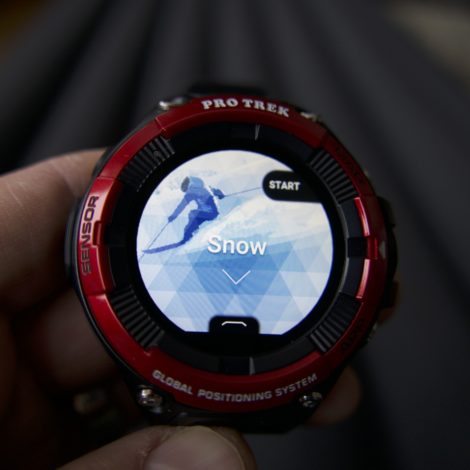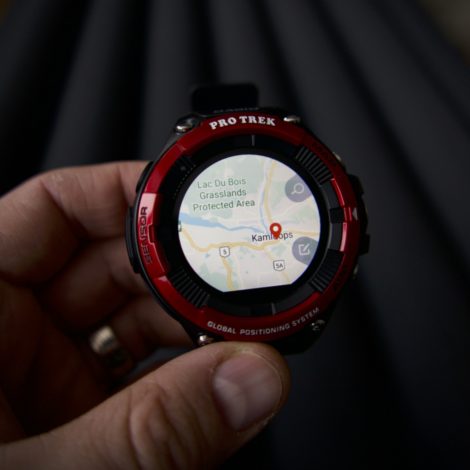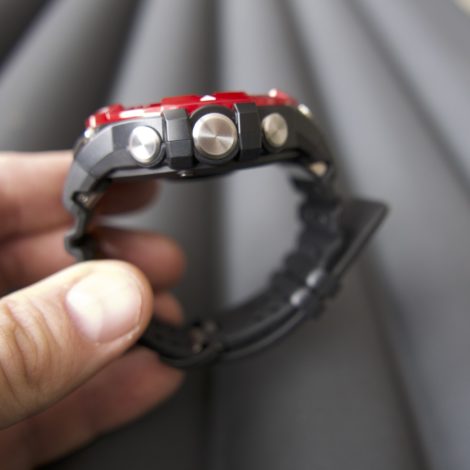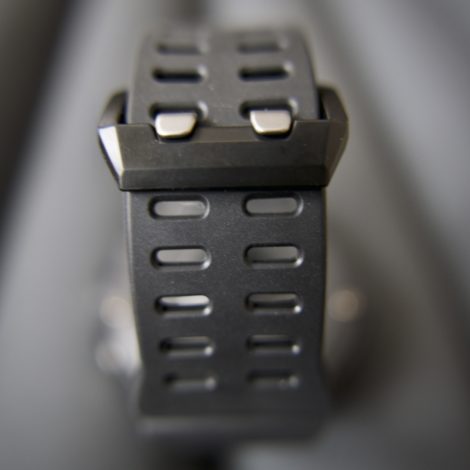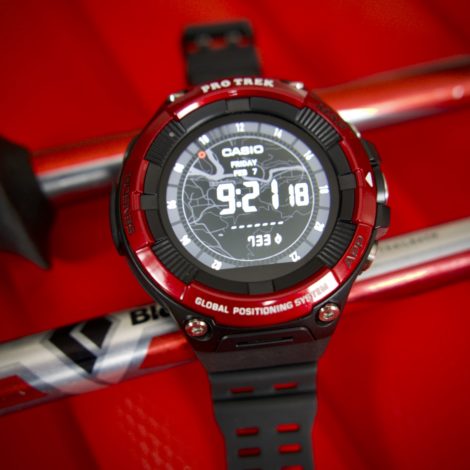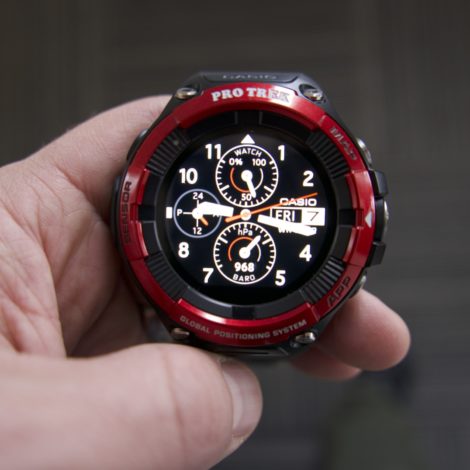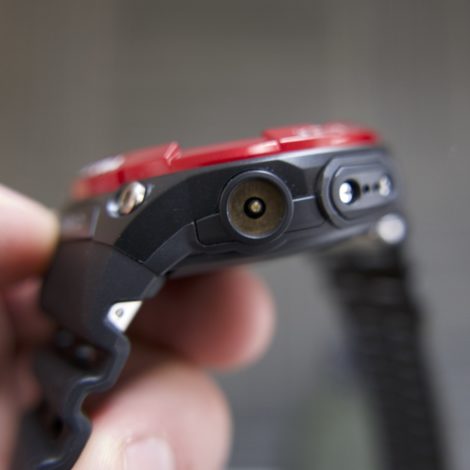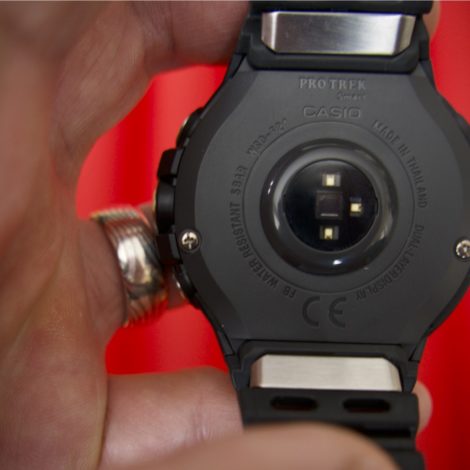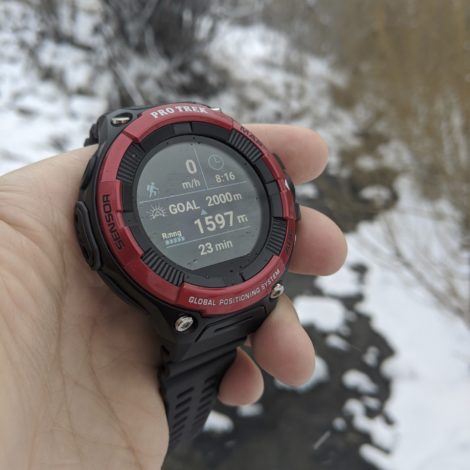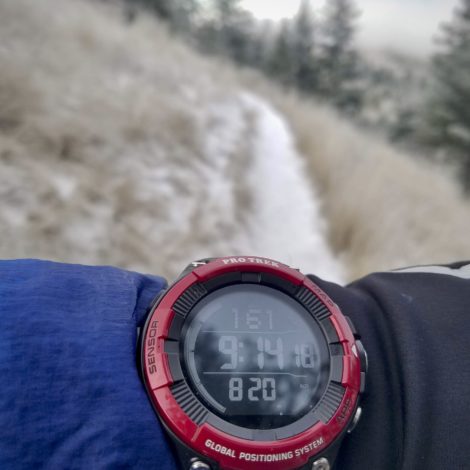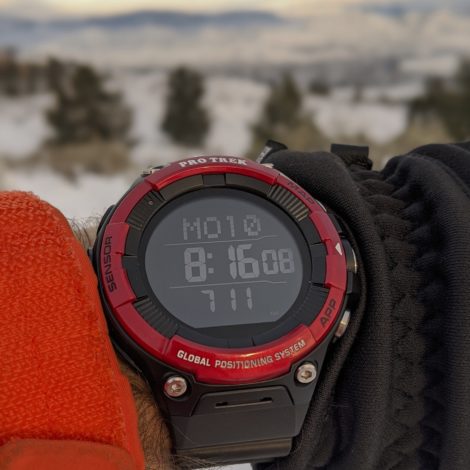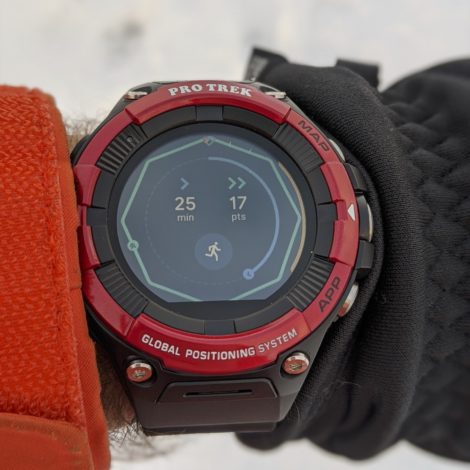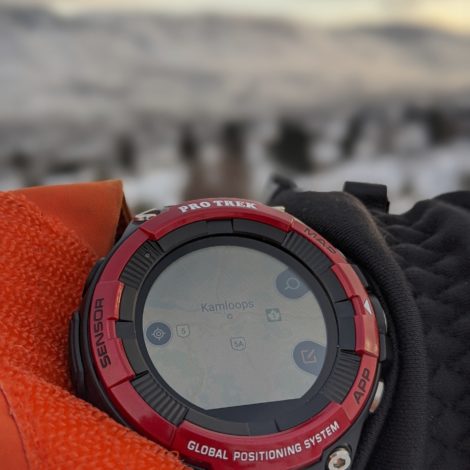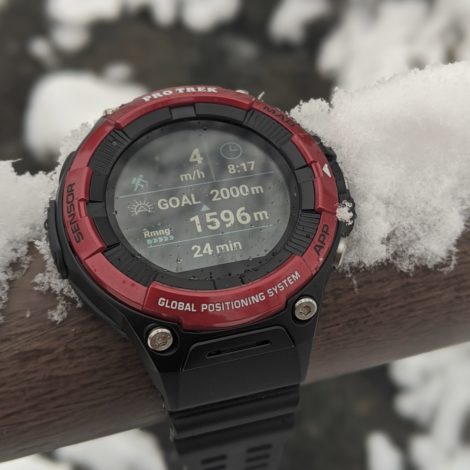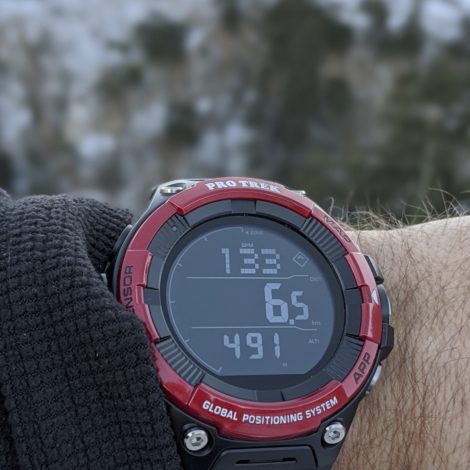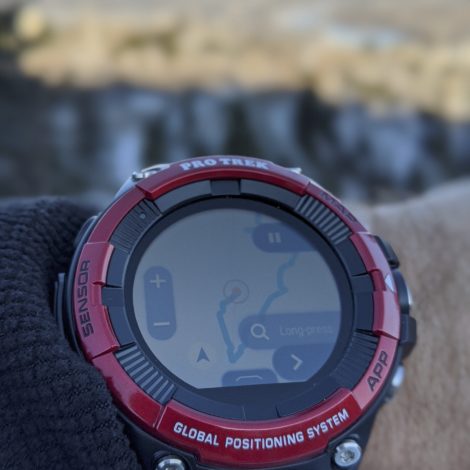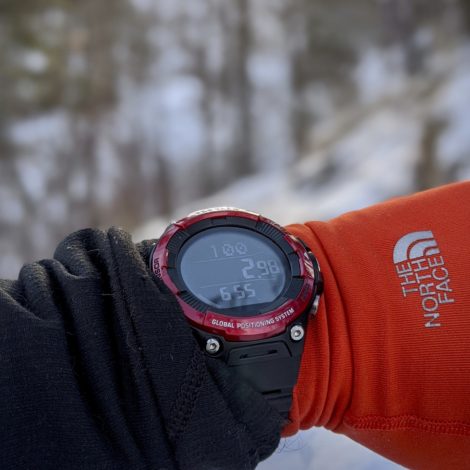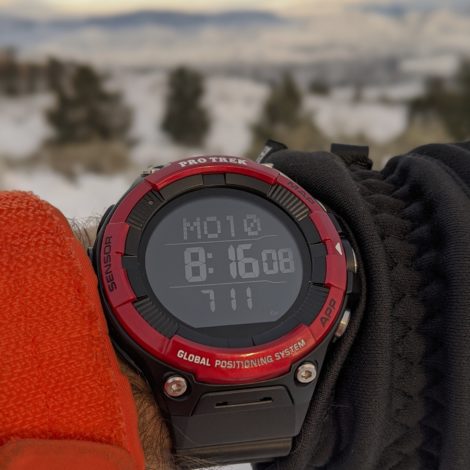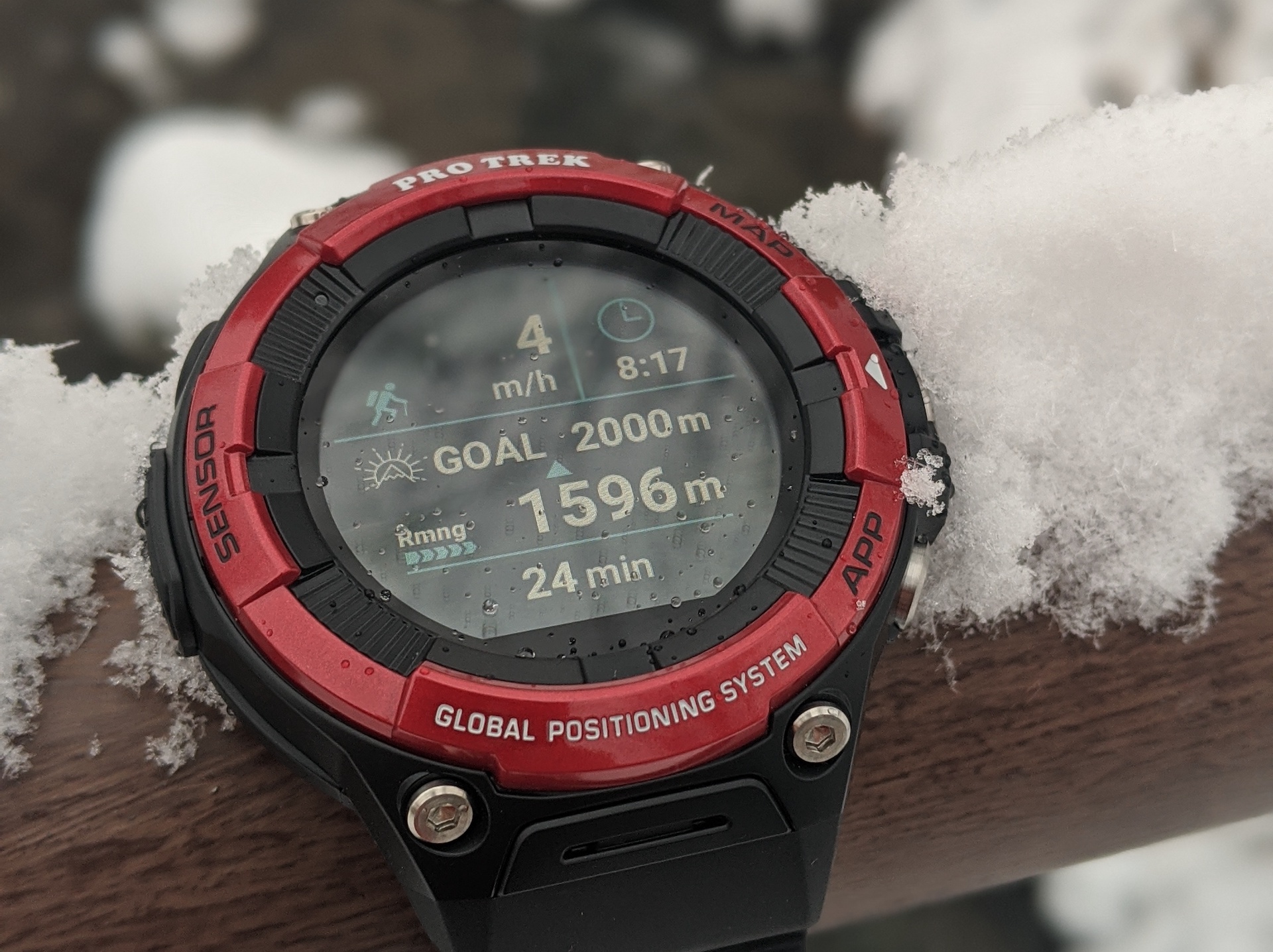
If you’re in the market for a tough, durable, outdoor watch and ask a watch enthusiast what to buy, 10-to-1 odds say the answer is a Casio G-Shock. Not a bad suggestion, by any means, but it’s not the only worthy contender within Casio’s line. Casio’s Pro Trek line is often overshadowed by its über-popular older sibling, but the Pro Trek line was designed specifically for rough-and-tumble outdoor use. For those in the know, the Pro Trek line was (and to some extent still is) the choice du jour if you are looking for features like altimeter, barometer, compass, and thermometer without paying the premium for a high-end G-Shock. Sure, you don’t get the G-Shock’s Shock Resist, but you gain access to a myriad of high-end features and access them at an attractive price point.
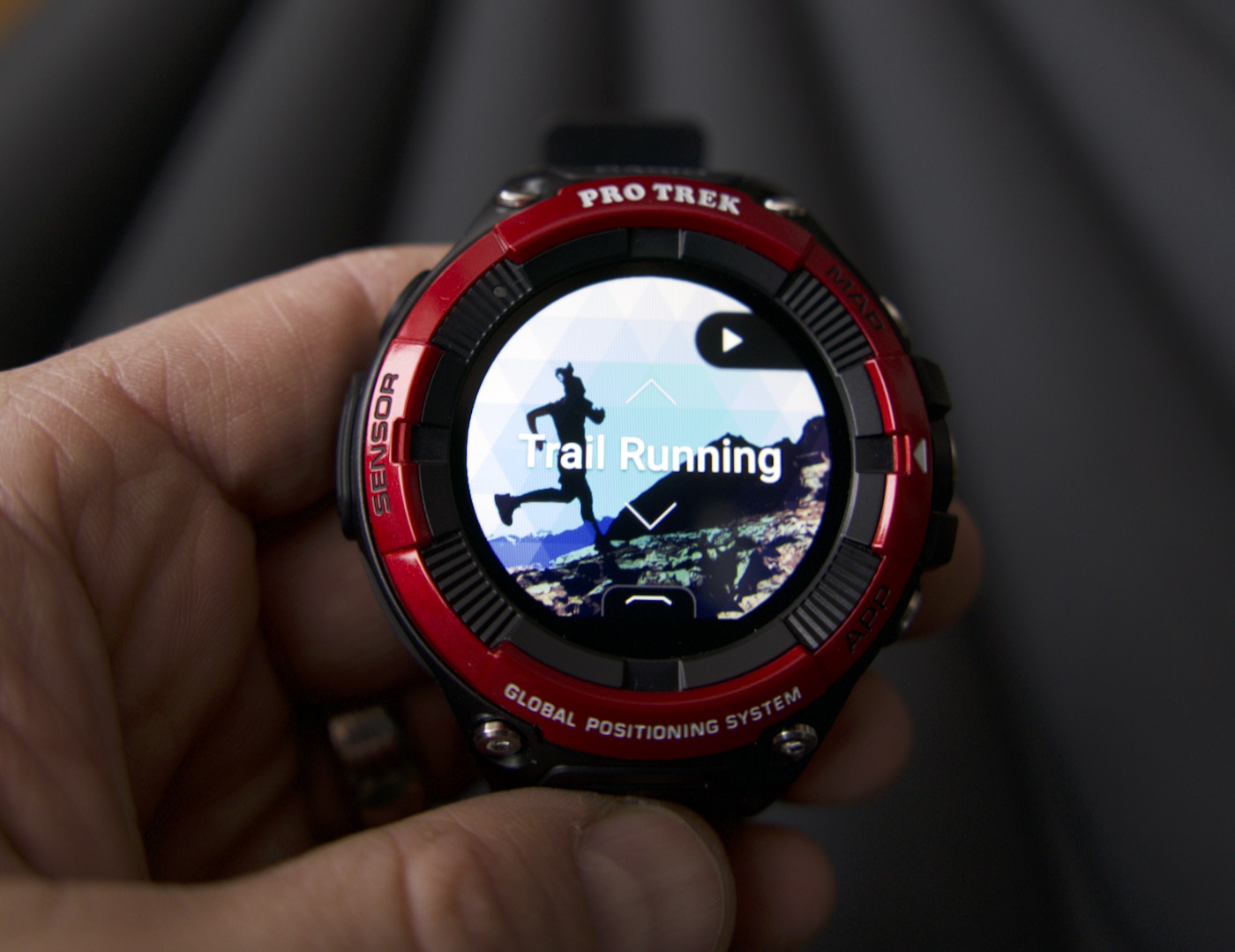
The Casio Pro Trek WSD-F21 HR (hereafter: Pro Trek) is a fully-featured GPS smartwatch with optical heart-rate monitor that runs on Google’s Wear OS system and certainly doesn’t suffer in the toughness category, featuring military-grade (MIL-STD-810G) protection. In addition to the Wear OS built-in apps, Casio offers its own display features and several custom apps, including Moment Setter, which allows you to customize notifications and information displayed during training or other events. Want a notification when you have an hour of daylight left on your hike or you’ve reached your goal of 500m of elevation gain? Moment Setter can do that. While there are still some push-button controls, the bulk of interaction with the watch revolves around the touchscreen. Smartwatches with GPS functionality, a heart-rate monitor, and Wear OS are hardly rare, but it’s certainly noteworthy when a behemoth like Casio releases an update to its flagship smartwatch, and I was eager to go hands-on to see Casio’s approach.
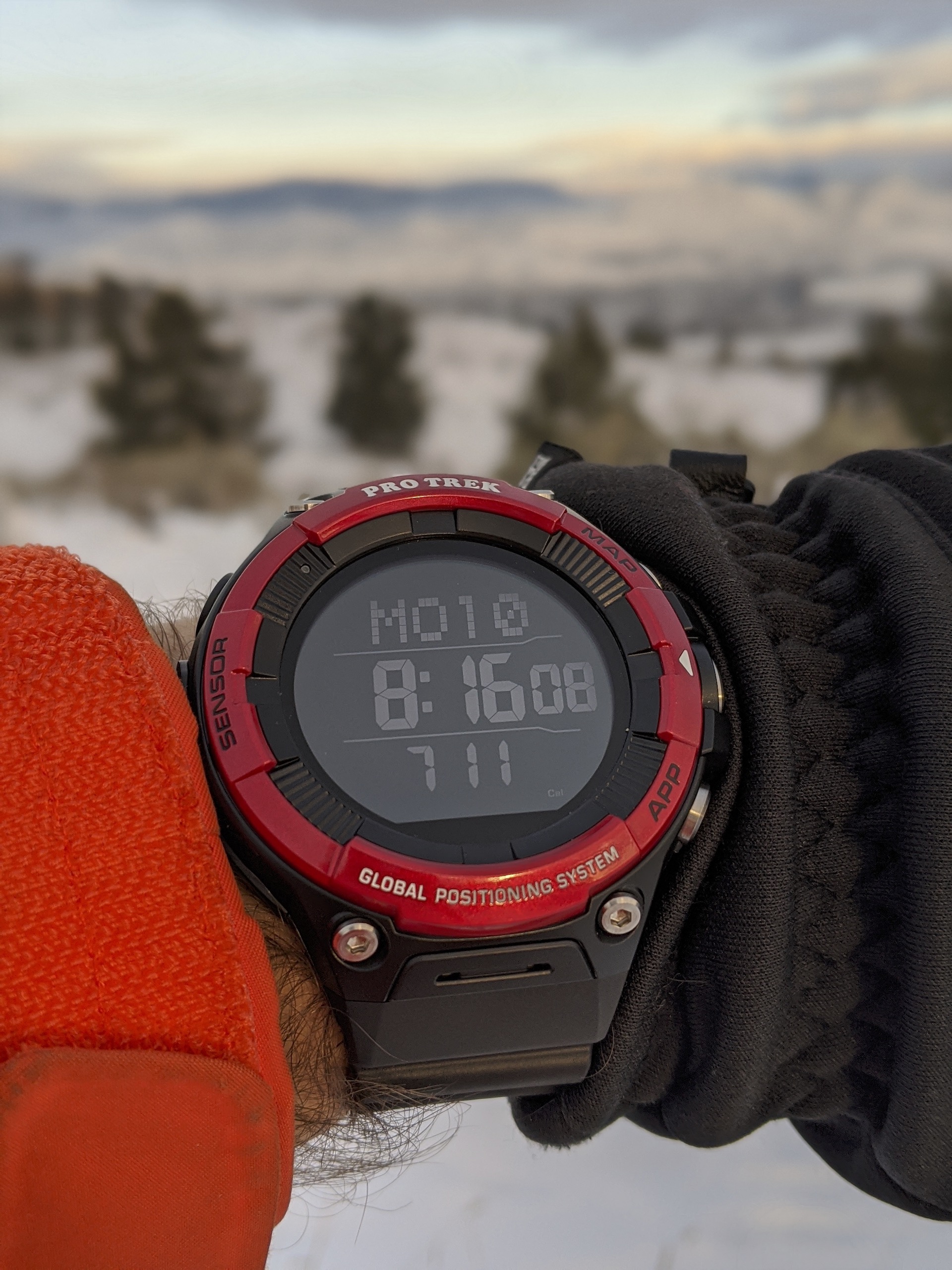
Reviewing a smartwatch presents something of a challenge. In a typical review, the watch does one thing: tell time. (OK, maybe a few things, depending on complications). As such, the job of the reviewer is to relay how well it accomplishes that task, both functionally in terms of the movement, construction, and wearability, as well as aesthetically in terms of design, legibility, and originality. The problem is that smartwatches do so many things and are so many different things to different people that it’s nearly impossible to do a one-size-fits-all review. In the case of the Casio Pro Trek, I decided to focus on the ethos of the Pro Trek line and review how the watch functions as smartwatch geared towards outdoor pursuits. As such, it accompanied me through a cold Canadian winter of trail running, biking, skiing, and hiking. When temperatures dropped below -20°C, I wimped out and took the watch to the gym and pool. Keep reading to see how it fared.
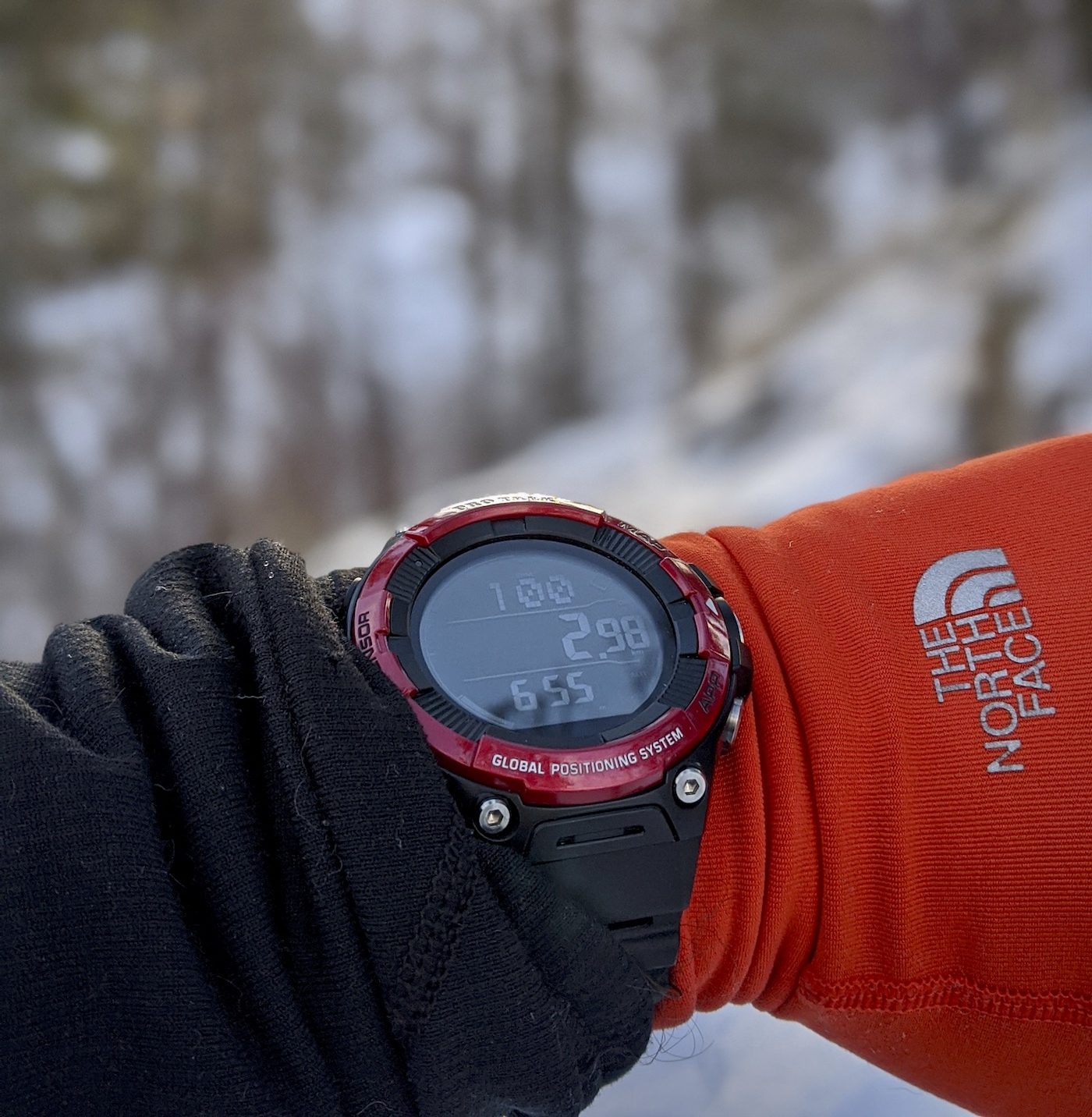
Case and Strap
The case of the Casio ProTrek features a mix of resin and plastic with a firm, but pliable integrated urethane strap. If you’re familiar with Casio—either the G-Shock line or the Pro Trek line—the case should be instantly familiar. The bold, text-heavy bezel, numerous angles, and blocky, three-dimensional design all scream Casio. This particular model comes in two colorways, one all black and the other with a cherry-red bezel. Coming in at 57.7mm-wide, it’s a large, bold watch, so the red bezel fits.
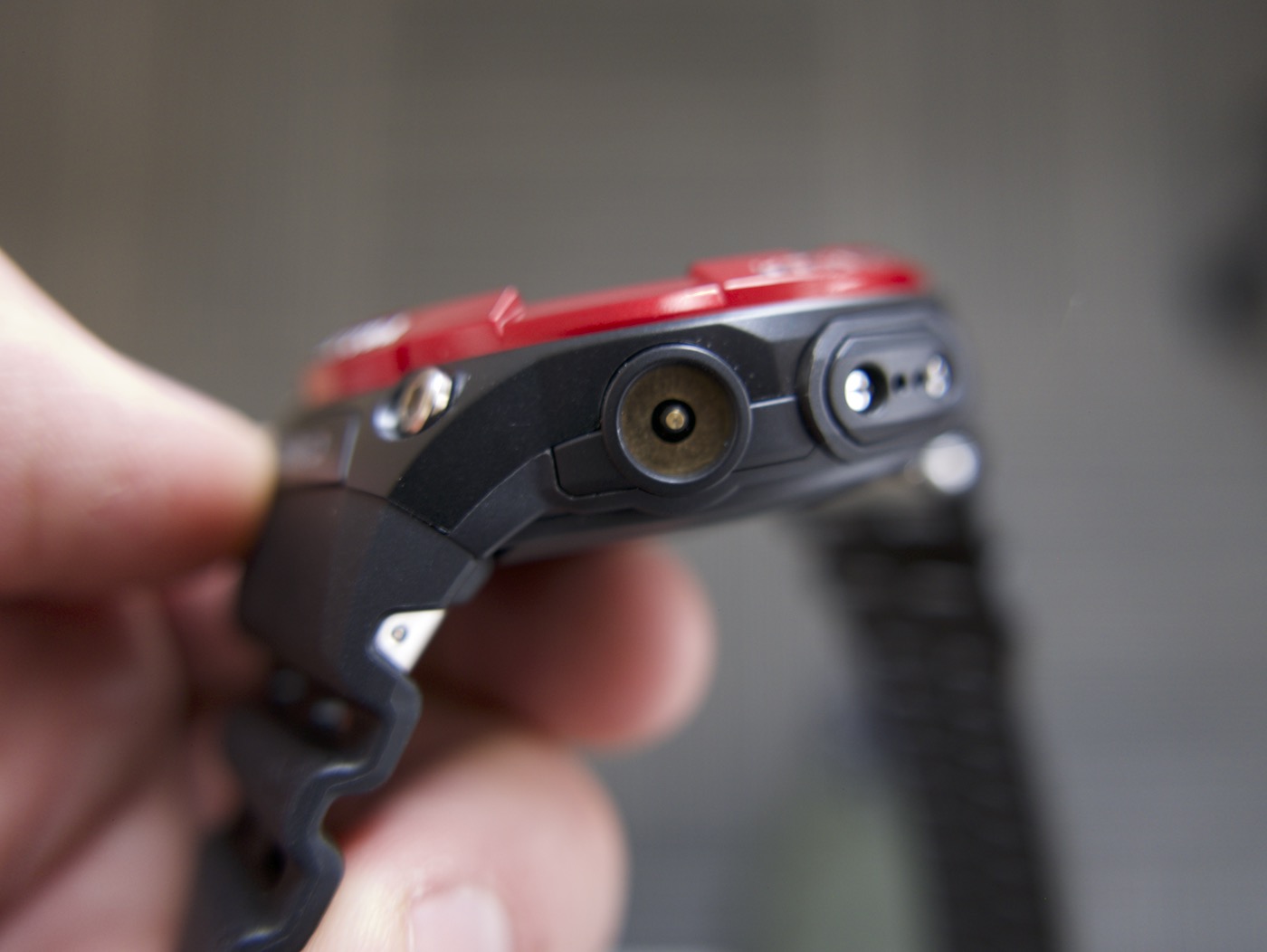
Overall, the case construction is familiar and fairly typical of Casio, but it has more of an aggressive and distinctive aesthetic than the bulk of sports-oriented smartwatches, which gravitate toward minimalism. Unfortunately, the first watch I received for review developed a crack on the caseback leading to a sensor failure and had to be returned. This appears to have been a manufacturing defect and my replacement watch functioned perfectly. Problems happen, but it’s how you deal with them that matters. Luckily, Casio watches are covered by a two-year warranty, so I would have been covered regardless of whether I had been testing out a review piece or not. Still, it’s worth noting and was surprising given the brand’s reputation for strength and durability.
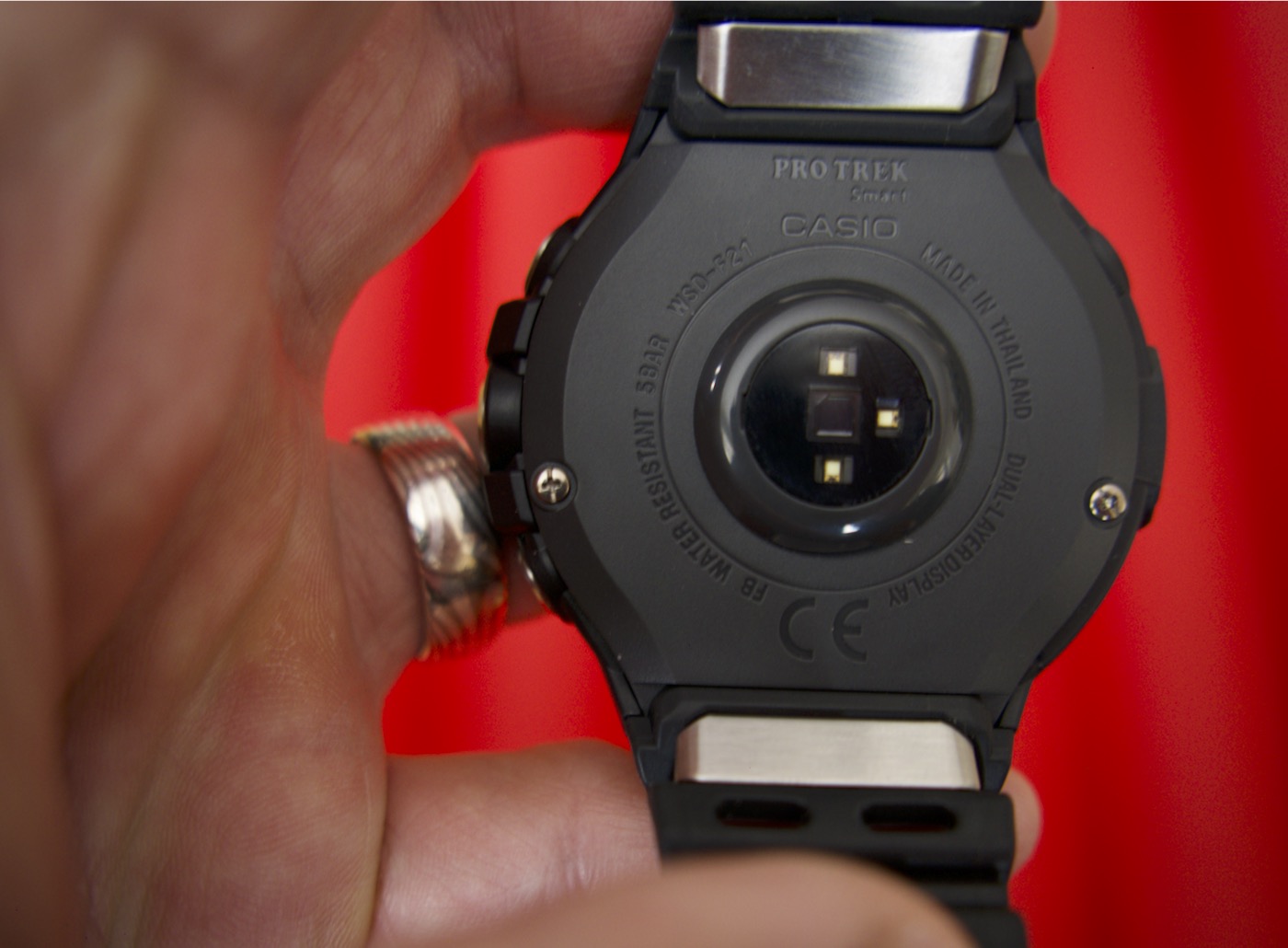
Back to the watch. As noted, the strap itself is integrated with the head of the watch, so this isn’t a watch for fans of frequent strap changes. While the band is functional and comfortable, I do have two issues. First, Casio opted for a plastic buckle. Given that the tangs are metal and this is meant to be a rugged outdoor watch, this choice makes little sense to me. Second, replacement straps are currently unavailable for this watch. Presumably, if you did break the buckle or the strap within the two-year warranty period, you’d be covered, but it would be nice to be able to simply pick up an extra strap just in case. I’ve broken rubber straps on exercise-focused watches in the past and had to resign the entire watch to electronics recycling, so this is an area I always look at when purchasing.
Charging the watch is accomplished by a magnetic connection at 10 o’clock. Sadly, the magnet is weak, so small bumps to the watch or charging cable knock it off easily. This is a bit of an issue since a smartwatch like this requires nightly charging if you’re using it for daily exercise and activity tracking. It works once you get the hang of it and are sure not to jostle the cord, but there’s a clear need here for a stronger attachment mechanism.
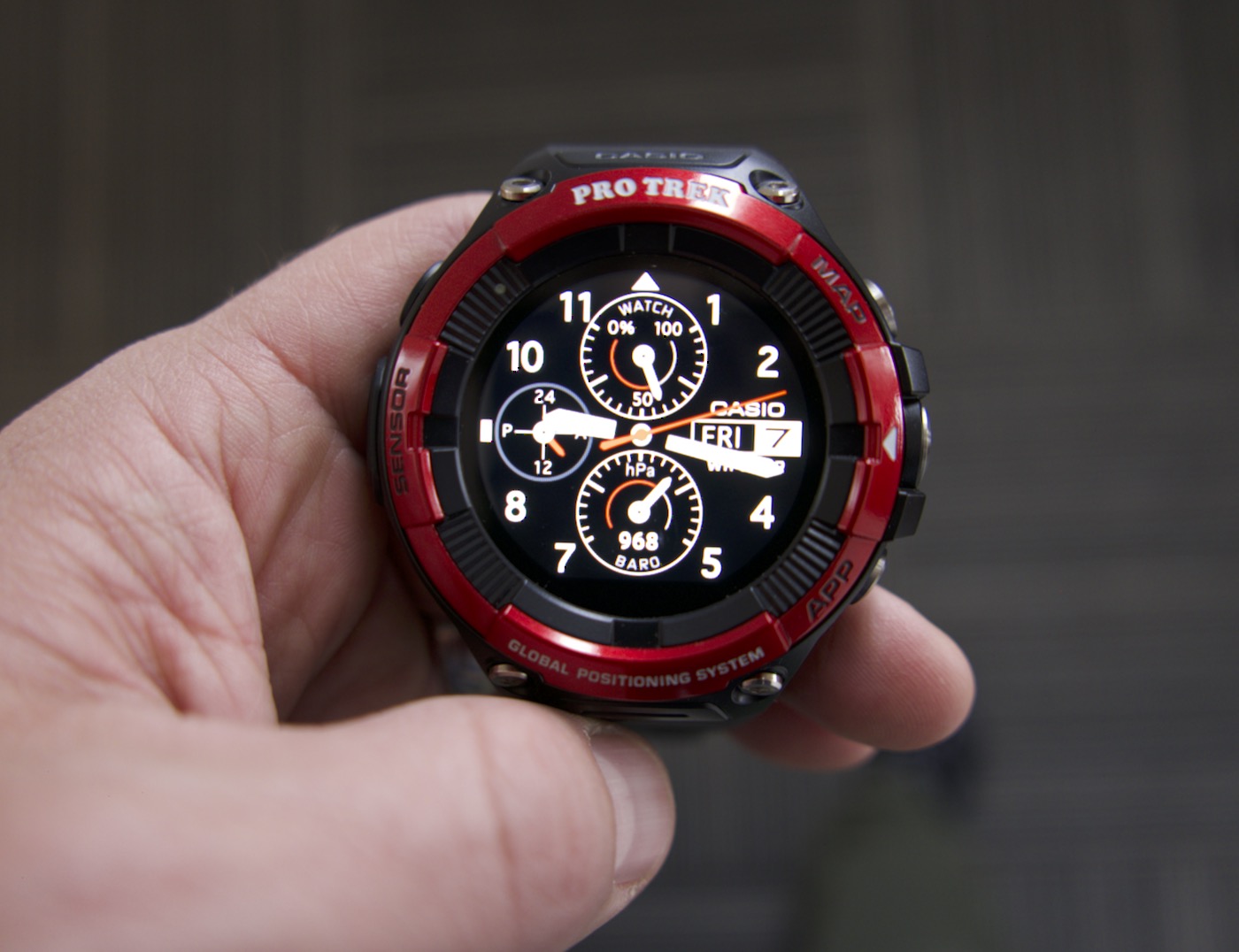
Screen and Operating System
When you first glance down at the screen, you’ll be greeted by a simple monochrome display, but a quick flick of the wrist or tap on the screen and the full-color 1.32” 320×300 pixel TFT LCD display appears. Under almost all lighting conditions, the display is easy to see, but in bright light, features like the map can get slightly lost (see photo below). There are several built-in watch faces to choose from, including analog displays, and additional display options are always available, but I stuck with the stock screen setup. My feeling is that if I’m wearing a smartwatch, I want to take advantage of all its functionality; if I want an analog display, I’ll reach for something else in my watch box. The stock screen is exceptionally functional, providing day, date, time, heart rate, and calories burned, as well as a record of heart rate activity provided around the outside edge of the dial. Start to move, however, and the display changes, providing a bar to instantly gauge your heart rate and workout intensity. This is the type of simple functionality that I thoroughly appreciate.
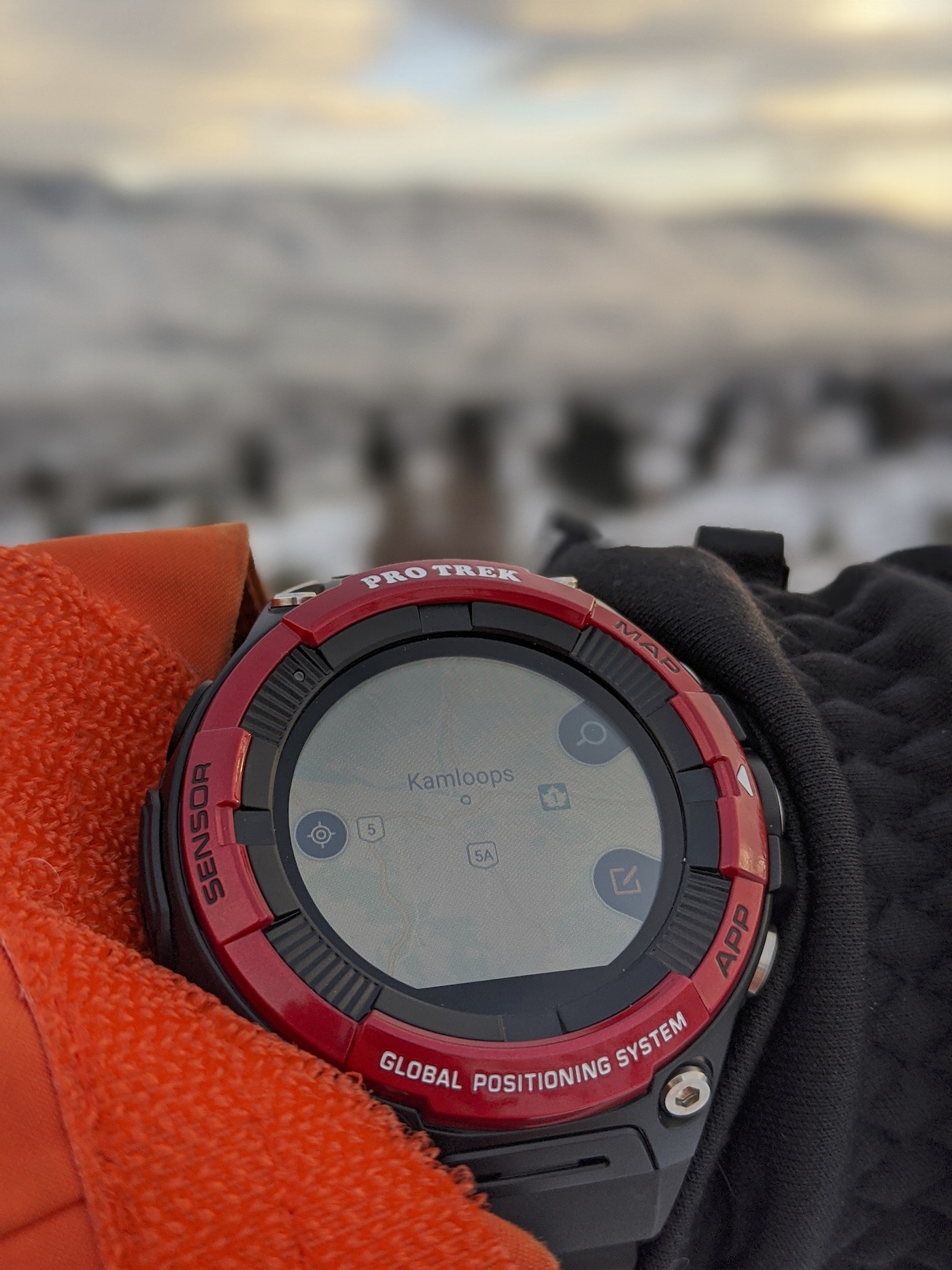
Accessing options on the watch involves a combination of button pushing and touch-screen swiping. Swipe down and you access the settings menu, swipe right for alerts and access to OK Google, swipe left for customized screens (e.g., weather, timer, Google Fit, etc.), and swipe up for notifications. Accessing the map involves a quick click of the “map” button and the “apps” button will take you to the built-in exercise apps screen. If you want to access other apps from the Google Play store, the center button has you covered. Those familiar with Wear OS from other smartwatches will feel right at home, but for those new to the Wear OS ecosystem, it can take some time to become comfortable navigating through the different screens and options. The user experience isn’t entirely intuitive, and I would definitely recommend watching some of the getting started videos to avoid frustration. Once you get dialed in, the experience is simple and natural.
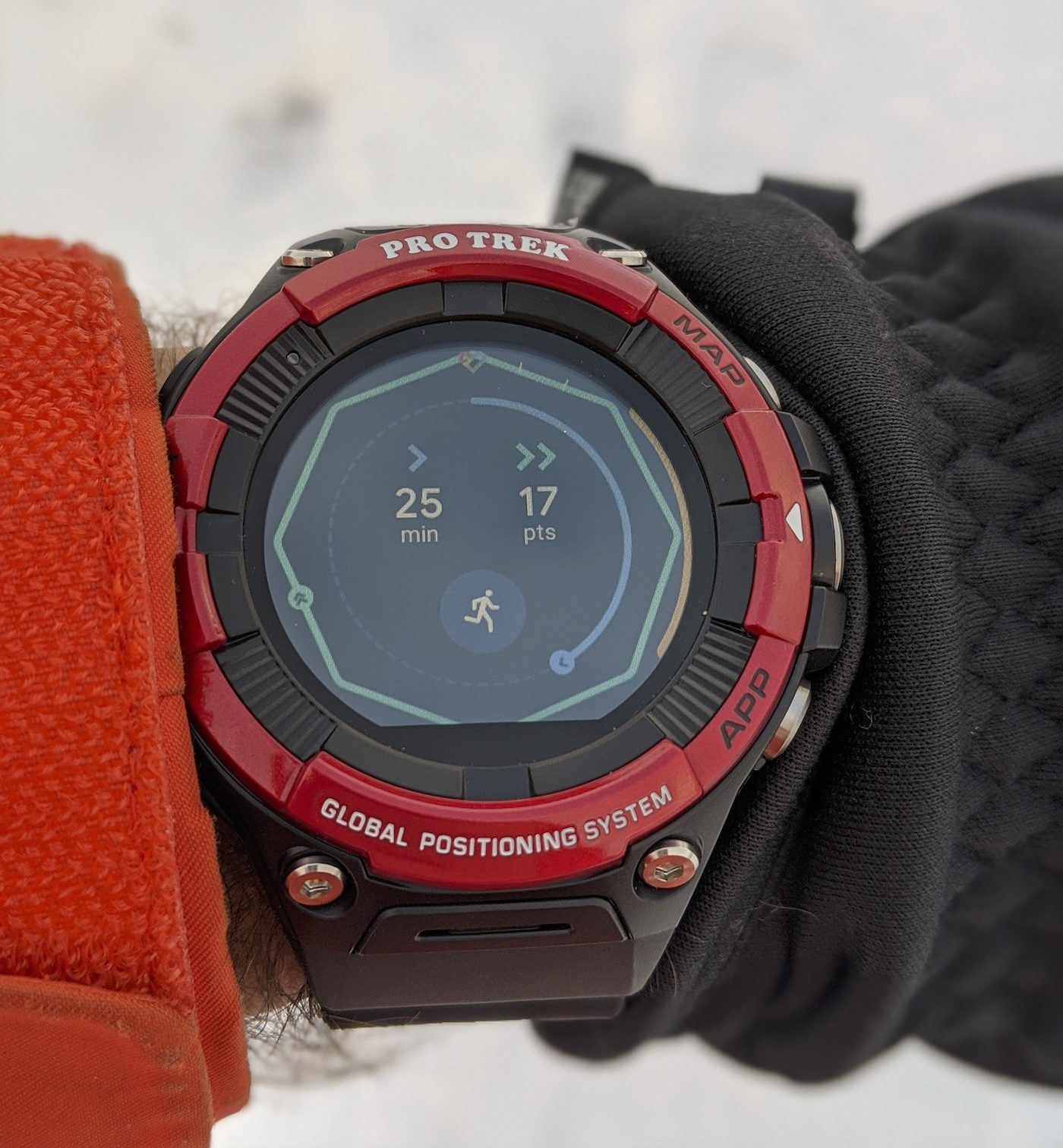
Performance
Using the watch primarily as a fitness watch for trail running, mountain biking, hiking, and skiing gave me ample opportunity to familiarize myself with the activity apps. Regardless of the activity, the GPS signal locked quickly and provided accurate tracking of both distance and elevation. Usually, by the time the activity screen loaded, I was able push play and start my exercise. Even after driving up to the ski resort, the GPS locked within seconds.
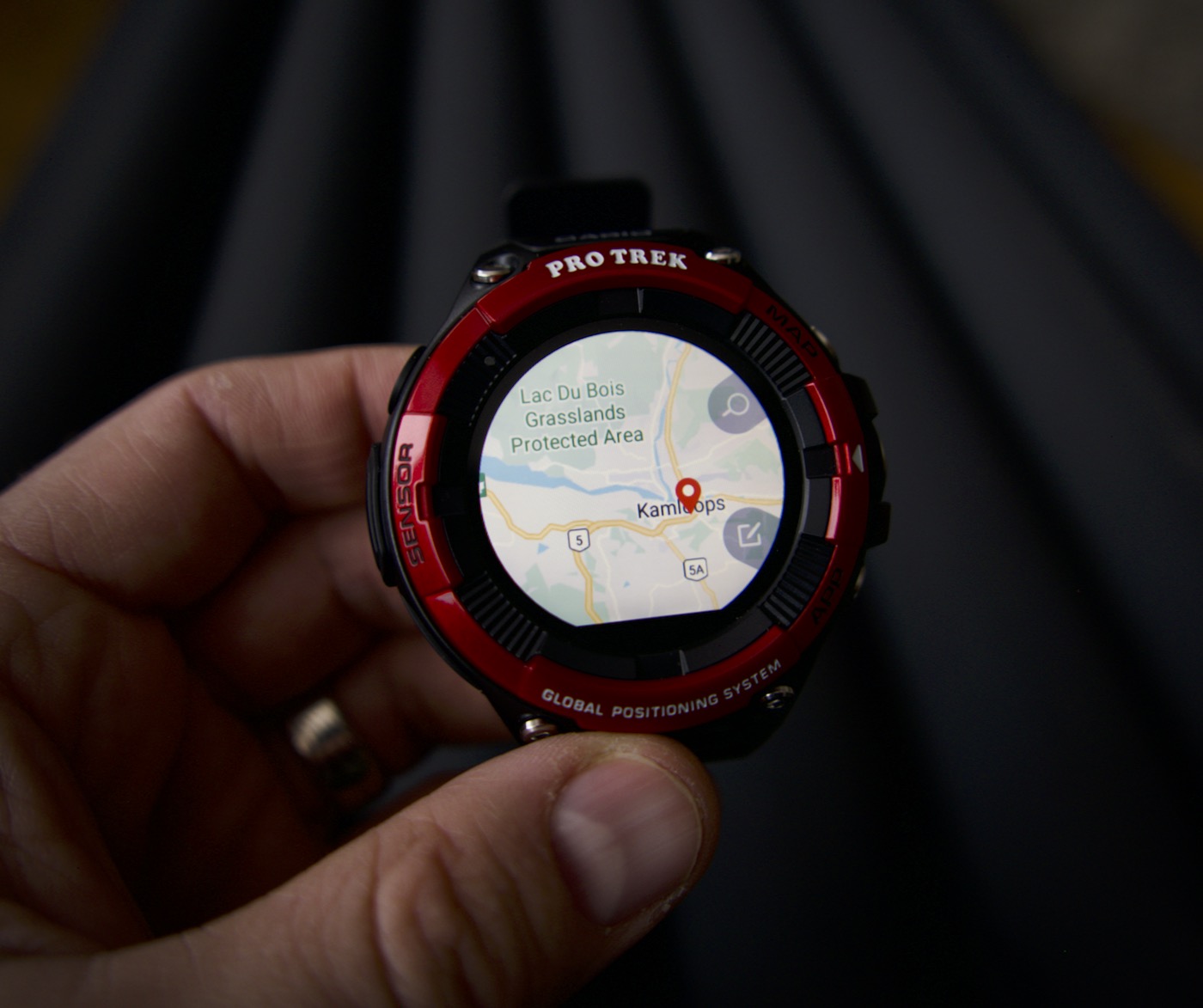
Maps are excellent and are definitely one of the primary advantages of having a large color screen on a smart watch. Because I was running and biking on familiar trails, I didn’t take advantage of the map import function, but it’s relatively quick and easy to import maps from Google Maps for a pre-planned run. However, I did download a large map of my region because I often run without linking the watch to my phone and, in case I do end up a bit turned around in the woods (easy enough to do), it’s a simple task to navigate back to familiar ground with saved maps. Worst case, there’s also a built-in compass function for navigation.
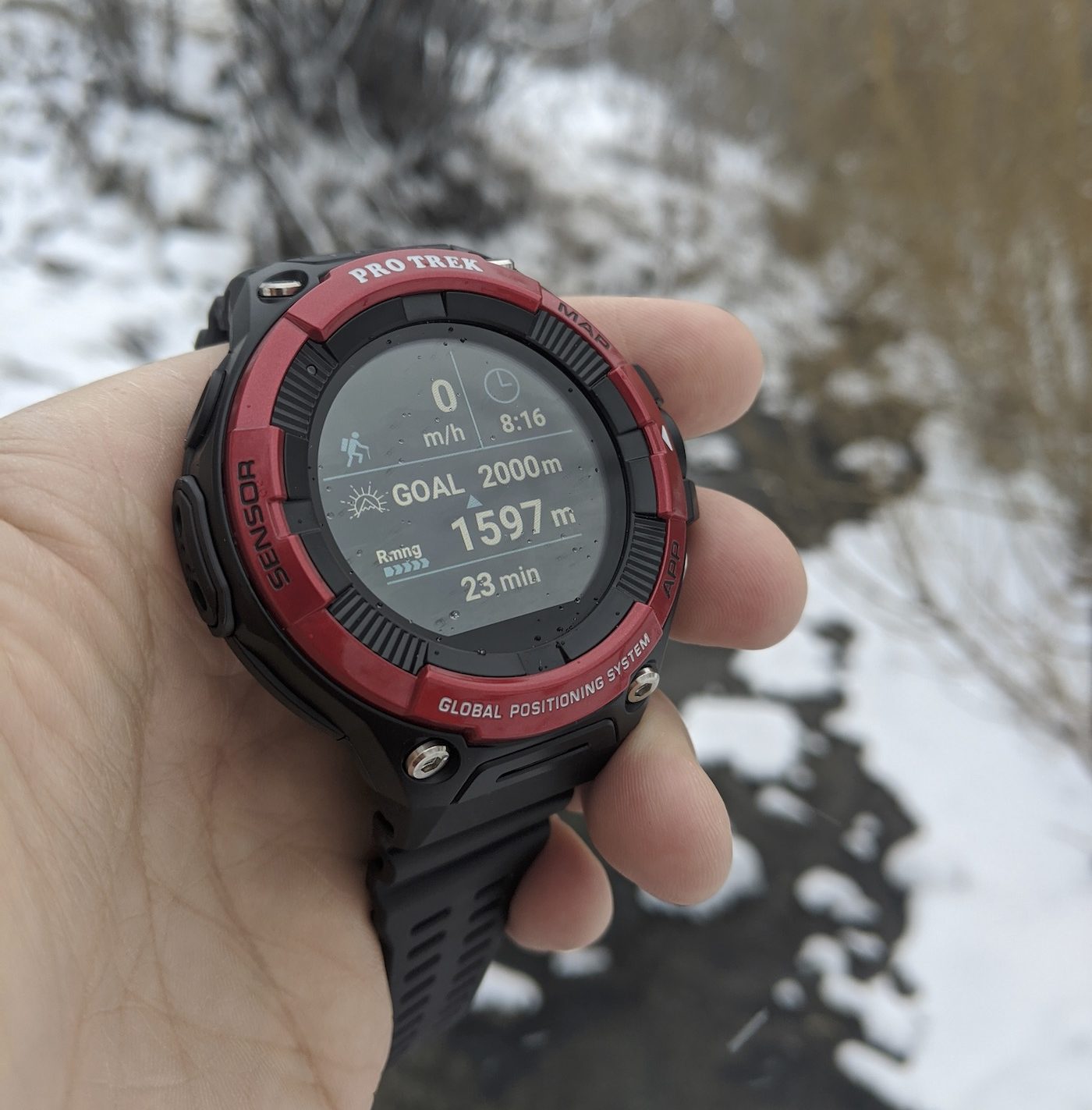
Both the trail running and cycling apps provided easy to access information (pace, time and distance elapsed, heart rate, etc.) that can be customized in its presentation based on your preferences. The only catch is that switching from the low-power “always on” display to the colored activity display requires a tap or a flick of the wrist. Not a problem while running, but a bit of an annoyance while biking since it requires taking your hand off the bar. In addition, touch screen displays aren’t ideal in winter since using it requires you to take off your gloves in order to change screens and access notifications or other function. Luckily the buttons are easy to use with gloves to pause and restart workouts.
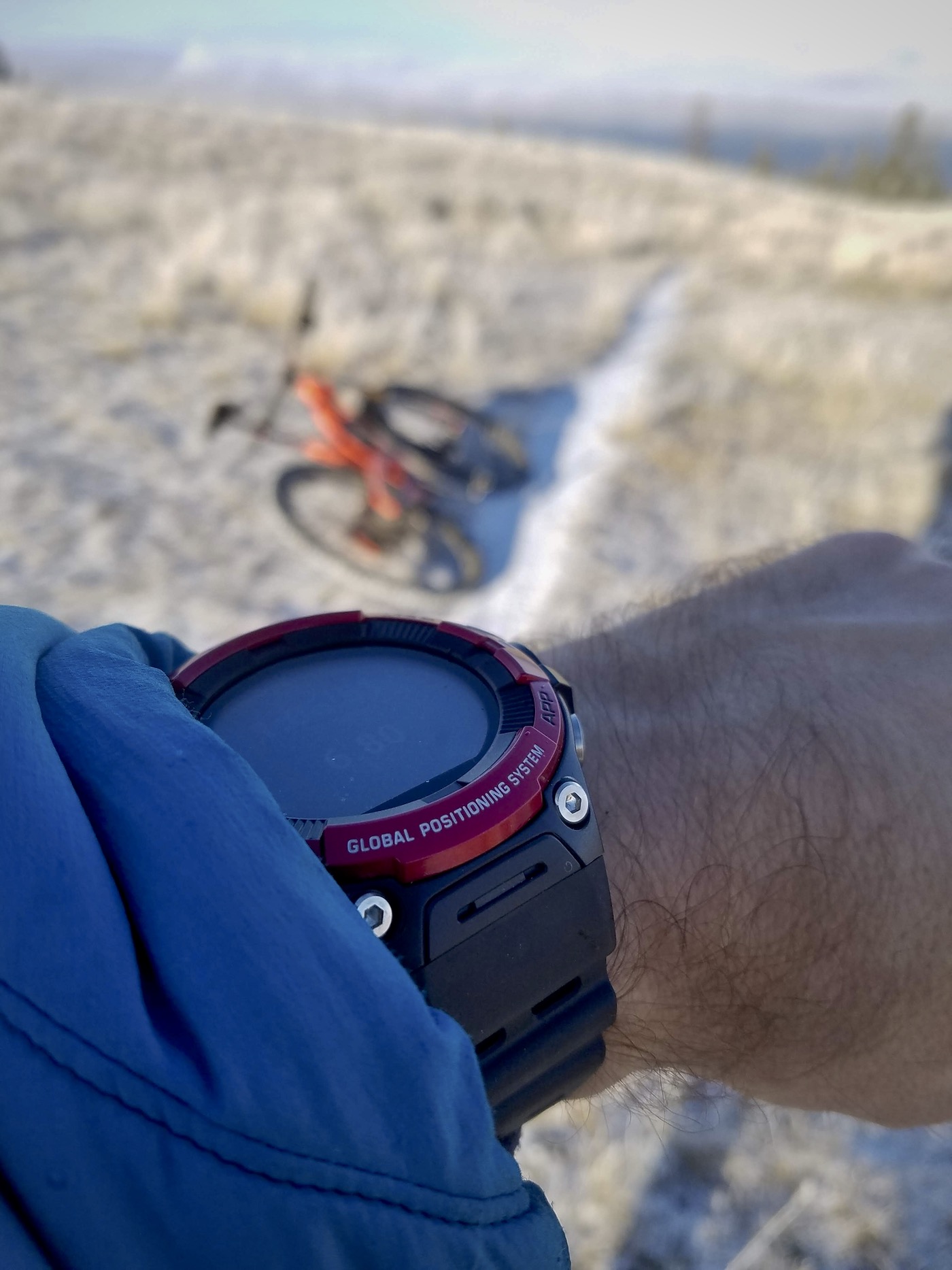
I didn’t get to go through all the apps (I’m not nearly that ambitious), but I used the skiing app on several trips to the mountain. It works well for tracking distance traveled, max speed, and other parameters. Unfortunately, it requires you to pause your run at the bottom and resume at the top of the list. That’s quite easy to forget and, if you’re interested in actually tracking these metrics for training, that incredibly fast uphill climb (while you were on the lift), makes a mess of things. My previous GPS watch, a Garmin Fenix 3, automatically detected uphill movement and paused until you started down again. That would be a relatively simple software update and one I would certainly appreciate.
One app that’s surprisingly absent is a swim app. This isn’t a Casio issue, but rather an issue with the built-in exercise apps that come with Wear OS. This can be remedied by downloading a third-party app like swim.com, but it is a bit perplexing given how this watch is intended to be used. For indoor use, one other thing to note is that this is a bulky watch. I didn’t notice the size on longer runs or bike rides, but when running on an indoor track doing high intensity interval training and lifting weights, I did find myself wishing for less bulk on the wrist.

One final note. After you complete and save your workout, you are presented with a screen that provides a breakdown of your exercise — distance traveled, VO2 Max, calories burned, etc. Unfortunately, once you’ve moved past that screen, there’s no way to go back and look at previous exercise metrics without going through a clunky process of downloading data from Google drive. If you want continuous access to your performance metrics, keep this in mind.
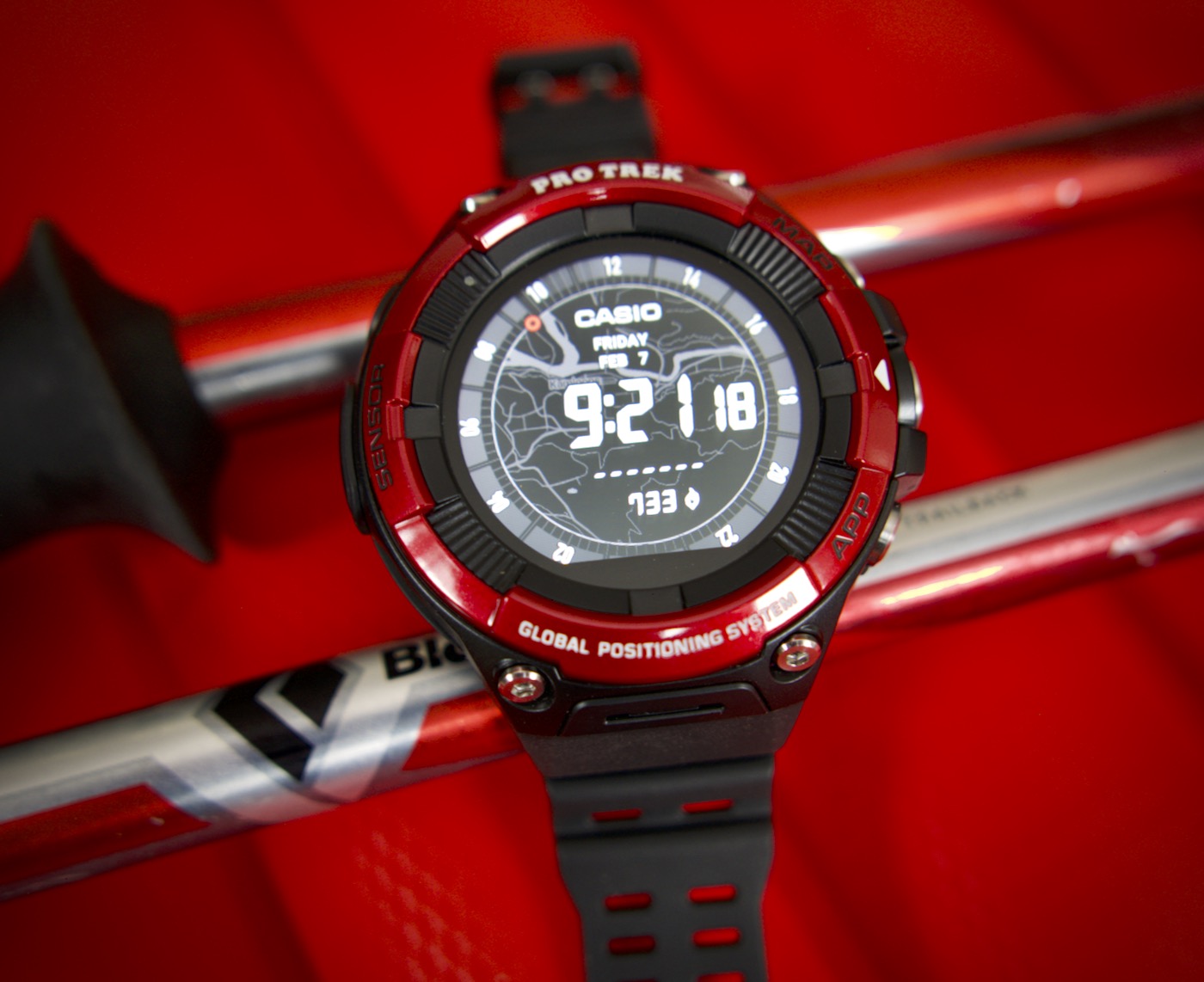
Final Thoughts
Aesthetically, the Casio Pro Trek WSD-F21 HR is bound to be polarizing and something of a niche product aimed primarily at the outdoorsy, exercise- and adventure-oriented crowd. While that’s not necessarily a bad thing, the Pro Trek certainly doesn’t have the sleek, inoffensive looks that help make the Apple Watch such a versatile watch and successful product. I’m more than happy to strap the Pro Trek on if I’m heading out for a run or ride, but it’s not a watch I pick for work…and I work in a very casual workplace. The large size and loud design language aren’t conducive for continuous wear. At least for me.
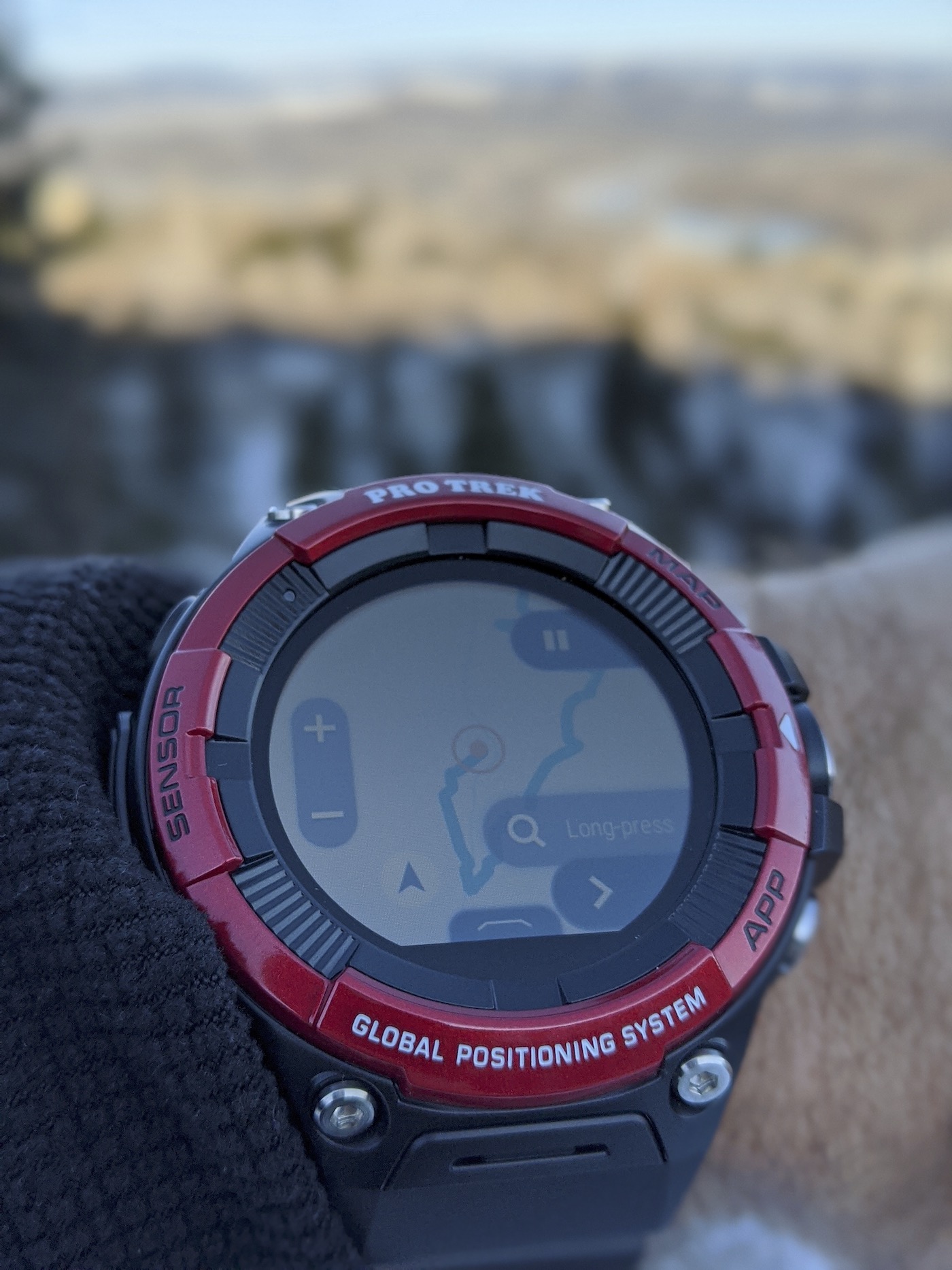
For exercise, the Casio Pro Trek became my go-to watch. For running and biking, the apps worked well and provided the GPS tracking and heart rate monitoring I look for in a fitness watch. Functionally, it does everything I need it to and much more that I’ll likely never use. If you’re a fan of Casio and are looking for a smartwatch with its distinctive aesthetic, the Pro Trek WSD-F21 HR is worth a look. The Pro Trek is not without its flaws, however. Some of those issues are simply a product of Wear OS and can be remedied by downloading standalone apps (e.g., a dedicated swim app). Some issues, however, are a product of design. The integrated strap, plastic buckle, and weak charging connection stand at odds with the rugged history of the Pro Trek line and the whole watch could stand to lose a fair bit of bulk. Despite these flaws, at $499 the Casio Pro Trek is a well-priced option with a generous full-color display that should satisfy fans of Casio looking for an outdoor smart watch. You can learn more about Casio Pro Trek at casio.com.
Necessary Data
>Brand: Casio
>Model: Pro Trek WSD-F21 HR
>Price: $499
>Size: 57.7mm-wide, 16mm-thick.
>When reviewer would personally wear it: During outdoor exercise, especially mountain biking and trail running.
>Friend we’d recommend it to first: Someone looking for an exercise-focused smartwatch who’s a fan of Casio’s design language.
>Best characteristic of watch: Excellent GPS functionality and generous full-color display.
>Worst characteristic of watch: Integrated strap with plastic buckle and extra-large case.


